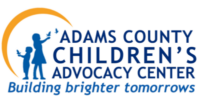
About Child Abuse
Child Abuse FAQ
Children deserve to grow up healthy and happy. But sadly, that is not always the case.
What is Child Abuse?
Child abuse is defined as doing or failing to do something that results in harm or risk of harm to a child. There are many forms of child maltreatment, including physical abuse, sexual abuse, emotional abuse, neglect, and child exploitation.
- At least 1 in 7 children have experienced child abuse and/or neglect in the past year, and this is likely an underestimate
- A child is raped every two minutes in the United States
- 1 in 3 girls and 1 in 6 boys will be sexually molested before age 17
- 90% of child victims are abused by a family member or someone they know or trust
- About 60% of child abuse victims never tell anyone
- In 2019, 1,840 children died of abuse and neglect in the United States
Physical Abuse
Physical abuse is when a caregiver causes any non-accidental physical injury to a child. This includes striking, kicking, burning, punching, biting, hair pulling, strangling, throwing, shoving, whipping, or any other action that injures a child. Even if the caregiver didn’t mean to inflict an injury, when a child is injured, it is abuse.
Sexual Abuse
Child sexual abuse is any interaction between a child and an adult (or another child) in which the child is used for the sexual stimulation of the perpetrator or an observer. This includes touching the victim or having the victim touch the offender on their genitals (over or under clothing), the exposure of genitals of either party, exposure of graphic context to the child, and the introduction of sexual material in person or online. Sexual abuse can include both touching and non-touching behaviors.
- Touching behaviors may involve touching the vagina, penis, breasts, or buttocks, oral-genital contact, or sexual intercourse.
- Non-touching behaviors can include voyeurism (trying to look at a child’s naked body), exhibitionism, or exposing the child to pornography.
Emotional Abuse
Emotional abuse is defined as inflicting and/or allowing a mental or emotional injury to a child that results in an observable and tangible impairment of the child’s growth and/or development of psychological functioning. This includes being ignored, rejected, isolated, exploited, verbally assaulted, or terrorized.
Neglect
Neglect is defined as leaving a child in a situation that would expose the child to a substantial risk of physical or mental harm or failing to arrange the necessary care for the child. Neglect generally includes the following categories:
Who is Affected by Abuse?
Child abuse knows no boundaries. Children of all ages, races, ethnicities, and economic backgrounds are vulnerable to abuse and neglect. Child abuse affects all genders in all kinds of neighborhoods, communities, and countries around the world.
Children living in poverty experience more abuse and neglect. Experiencing poverty can place a lot of stress on families, which may increase the risk for child abuse and neglect. Rates of child abuse and neglect are 5 times higher for children in families with low socioeconomic status compared to children in families with higher socioeconomic status.
Family members are also affected by child abuse within their family. The non-offending parents and caregivers of child abuse victims often experience feelings of guilt and shame that are intensified by the real and perceived judgments of others, as well as the stigma surrounding child abuse, especially sexual abuse. For example, parents/caregivers may be:
- Dealing with the loss of a partner and experiencing financial hardship if the abuser was in the home
- Struggling with their own experiences of abuse
- Trying to care for other children in the home and keep up with the family’s day-to-day needs
- Navigating child welfare and/or legal processes
Siblings and other children in the home may feel unsafe or anxious and may not understand what has happened or why things at home have changed. They may feel tensions and witness crises or conflicts within the home, but lack the knowledge to understand why.
However, it is very important to understand that a caregiver’s response to their child following disclosure of abuse is one of the most significant factors influencing the impact of the abuse on the child.
Who Are Perpetrators of Child Abuse?
Child abuse perpetrators can be anybody. The majority of child abusers are someone the child knows or trusts. They can be any gender, race, or economic status. They are usually child-friendly, likable, well-dressed, and good with children. They may seek out opportunities to work directly with children.
Often perpetrators will tell the child not to tell anyone about what they are doing. They may threaten the child with violence towards the child or the child’s loved ones or tell the child that no one will believe them if they tell.
Sexual abuse perpetrators often do not use physical force, but may use play, deception, threats, or other forms of coercion to engage children and maintain their silence. These tactics—called “grooming” —may include buying gifts, gifting money, or arranging special activities and may further confuse the victim. More often, sexual abusers find their victims online through social media.
What Do I Do if I Suspect a Child is Being Abused or Neglected?
If you suspect child abuse or neglect, report it immediately by calling the statewide child abuse hotline, ChildLine: 1-800-932-0313. Agents are available 24/7. All reports are anonymous, so you do not have to worry about your identity being revealed to the child, their family, or the alleged perpetrator. Suspicion is enough—you do not need proof. Learn the Signs
What Should I Do If a Child Discloses Abuse to Me?
When a child discloses abuse to you, it means that the child has chosen you as the person they trust enough to tell. The child has broken through secrecy, fear, and shame, even if only for a moment. This is a big achievement. It shows the child’s deep resiliency. React responsibly.
- Understand that the child has taken a big risk in telling you
- Give attention, compassion, and belief
- Offer support
- Don’t overreact
- Thank the child for being so brave and telling you
- Let the child know that you will be getting help but be sure not to make promises you cannot keep (for example: “you will never have to see that person again”)
- Ensure the child is emotionally and physically safe (for example: if the perpetrator lives in the same home or if there is a chance the child is at immediate risk of re-victimization, call 911 immediately)
- Make the report to ChildLine immediately
How Can I Prevent Child Abuse?
Everyone deserves to live in a community where children are safe. The impact of child abuse can have life-long traumatic consequences for its survivors. But we, as adults, can prevent child abuse. Learn about our abuse prevention education programs.
Experts believe that when 5% of a community’s adults learn about child abuse prevention, that is the tipping point in reducing child abuse in our community.
Five Steps to Protect Our Children
- Learn the Facts
- Our choices about children’s safety should be guided by reality rather than passive trust. Recognize the prevalence of child abuse and understand how it occurs.
- Minimize Opportunity
- Eliminate or reduce isolated one-on-one situations and carefully screen those who care for children in youth-serving settings.
- Be aware of who your children are spending time with. People who sexually abuse children often become friendly with potential victims and their families. They participate in family activities, earn trust, and gain time alone with children.
- Monitor internet and smartphone use. The internet is an unsafe one-on-one environment for youth because offenders often lure children there. Create rules and engage kids in making it safer.
- Screen out people who may abuse children via background checks, in-person interviews that focus on boundaries with children, personal and professional references, and obtain prevention training. Learn about Prevention Education.
- Talk About It
- Discuss with your children what abuse is, the signs they should look for when interacting with others, and who they can talk to as trusted adults.
- Talking about abuse with children not only increases their knowledge but also decreases the stigma of them telling you something has happened.
- Recognize the Signs
- Review the indicators of abuse.
- React Responsibly
- While it can be very upsetting to hear a child tell you they have been abused, one of the most important factors in their healing is the reaction of the adults they tell.
- Do your best to remain calm while talking with the child.
- Do not press them for more information than they are willing to openly tell you.
- Thank them for being brave and telling you.
- Assess for their safety: are they in immediate danger and/or does the alleged perpetrator live in their home? If so, call 911.
- Make a report to the ChildLine hotline: 1-800-932-0313.




